Author: Isabel Grijalva, former CDF staff member
The Charles Darwin Research Station (CDRS) is a must-see for any visitor to the Galapagos Islands. The research station, which is located on Santa Cruz Island, is famous for its scientific research and conservation efforts since its establishment in 1964. It was here that scientists developed the first captive breeding program for giant tortoises, where plans were developed for the establishment of the Galapagos Marine Reserve, and where studies on endemic species have been conducted. The scientists at CDRS continue to conduct groundbreaking research in conservation science today, and these studies are used to help inform management practice to better preserve the unique ecosystems of the Galapagos Islands.
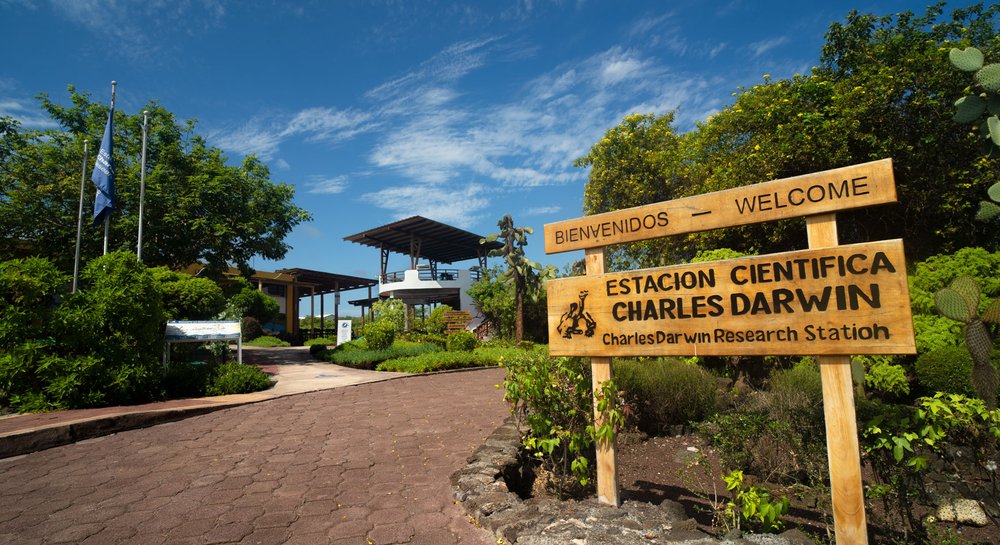
There is so much to do and see at the Charles Darwin Research Station, but here are five places you can't afford to miss:
1. Exhibition Hall
The Exhibition Hall is a great place to start your visit. It is here that you will learn about the history of the Charles Darwin Foundation, the establishment of the Charles Darwin Research Station, and the scientific projects that we are overseeing today. You will also get to learn about the rich biodiversity of the Galapagos Islands and what we are doing to preserve its natural beauty. And while you're at it, pick up a souvenir or two in our Donations Point!
After visiting our Exhibition Hall, you can enjoy our terrace where you will find a relaxing ambiance. It is the ideal place to have a tasty break before visiting the next site.
Visiting hours: Monday to Sunday from 8:00 to 18:00.
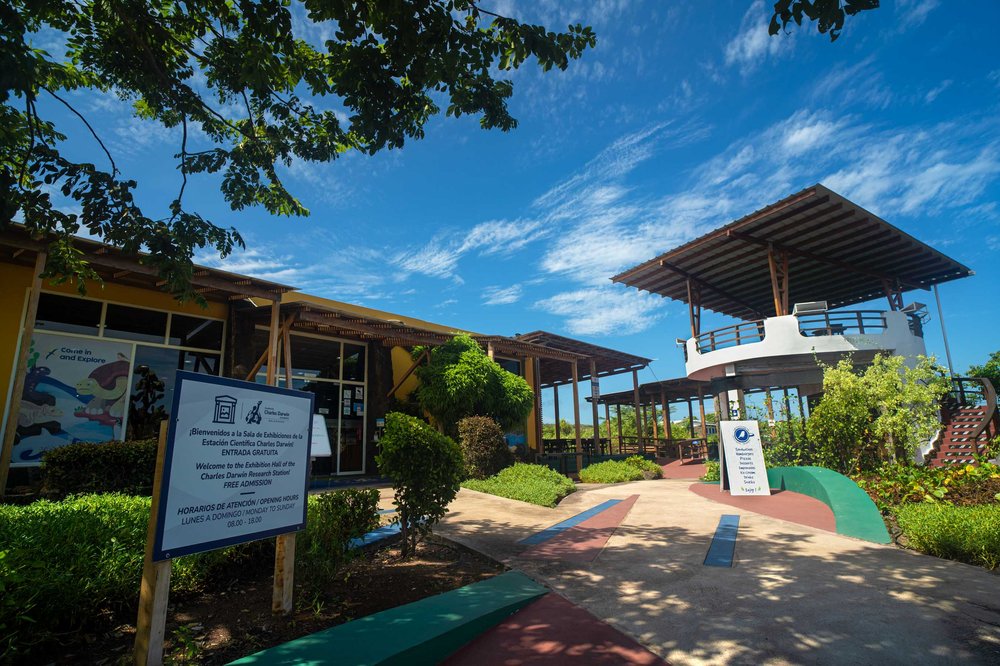
2. Marine World
Be sure to also make time to see the Van Straelen Interpretation Center! Learn all about sharks and the vital ecological role they play, as well as their anatomy and senses. We also discuss the threats to shark conservation, and how deep-sea sharks are studied using unique scientific methodologies in the Galapagos Islands. Additionally, there is a section that educates visitors about ocean pollution with plastics, and provides recommendations on how each person can change their behavior in regard to this global problem. This visit is a great activity for kids!
Visiting hours: Monday to Friday from 8:00 to 17:00 hrs.
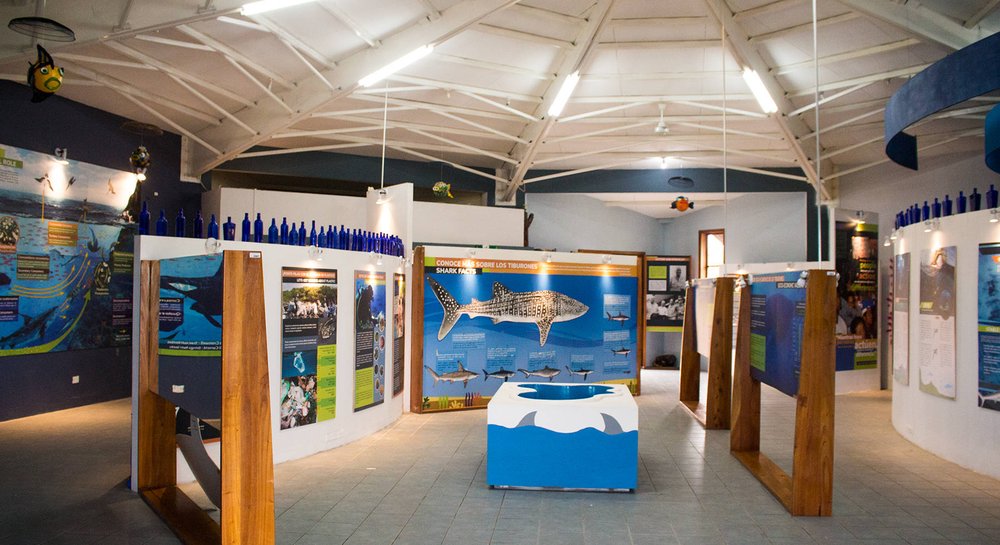
3. Outdoor Gardens
As a visitor, you can take a self-guided tour of our outdoor gardens and see the wide variety of native and endemic species that are found in the Galapagos Islands. Don’t forget to take a photo of yourself with our main sign before you go! Located right at the entrance, this sign is an iconic symbol of the Research Station, and we'd love to see it enshrined as part of your memories from your visit to CDRS.
Visiting hours: Monday to Sunday from 7:00 to 18:00 hrs.
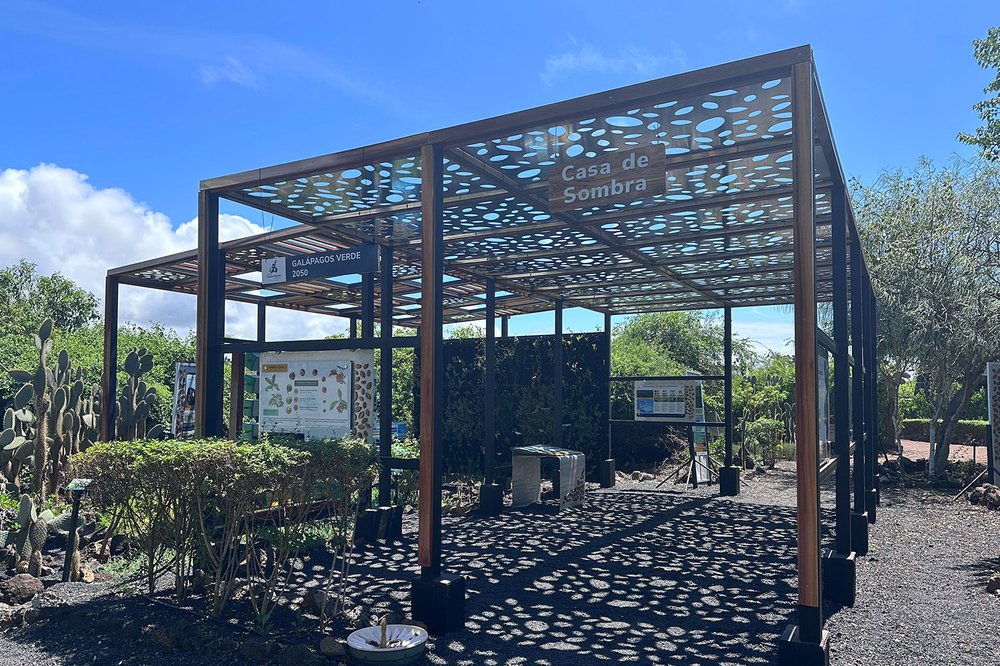
4. Photo with the Charles Darwin Statue
Have your picture taken with Charles Darwin! Charles Darwin visited the islands in 1835, and his findings there led him to formulate his theory of natural selection and evolution. The statue makes for a great place to take photos with family members, friends, or your significant other.
Permanent Exhibit: Monday to Sunday from 7:00 to 18:00 hrs.
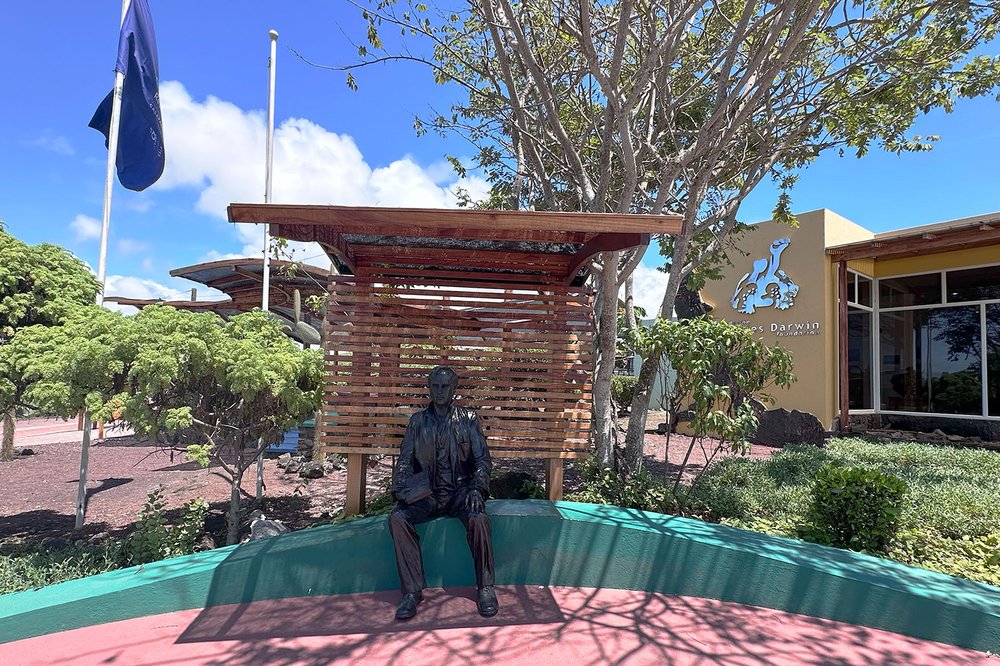
5. Learn about the Avian Vampire fly!
Learn about the Avian Vampire fly, Philornis downsi, and its impact on small land birds of the Galapagos islands! The flies’ larvae parasitize the nests of bird species native to the Galapagos Islands. It was first described in 1964, but was not known to parasitize any Galapagos bird species until 2005, when it was discovered to affect the Galapagos flycatcher (Myiarchus magnirostris) and the Vermilion flycatcher (Pyrocephalus rubinus). Now, some20 Galapagos bird species are under threat, including 12 species of Darwin’s finches.
If you want to learn more about this invasive species and how it negatively impacts Galapagos birds, make sure to stop by the Philornis lab during your visit!
Permanent Exhibit: Monday to Sunday from 7:00 to 18:00 hrs.
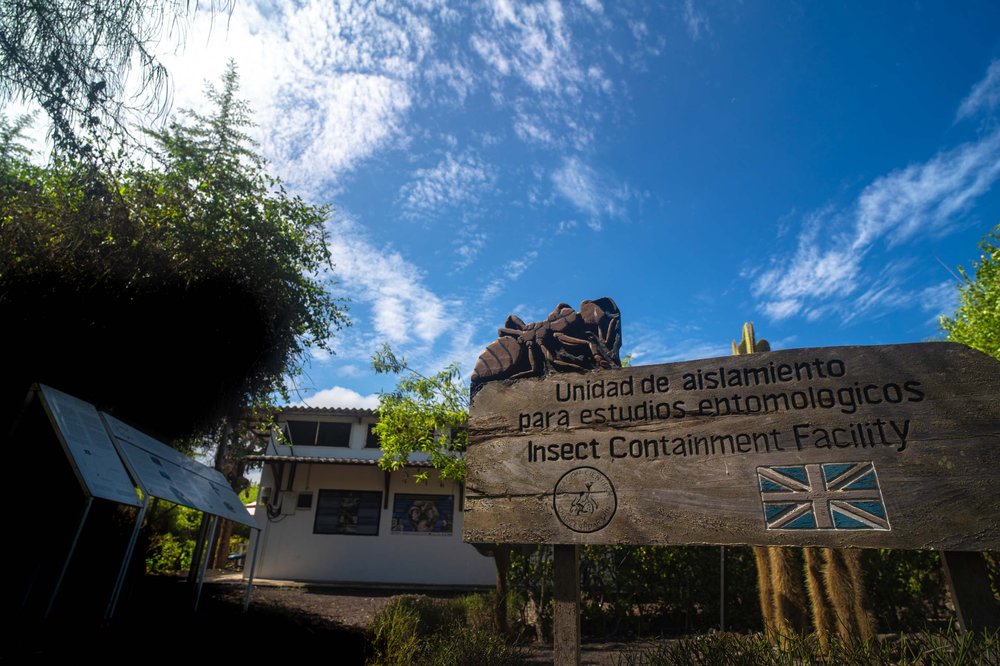
The Charles Darwin Research Station is always open to visitors, every day, including holidays. Our staff and scientists will be happy to answer any questions you may have about Galapagos species and their conservation. There is no entrance fee, so do make the time to visit!





